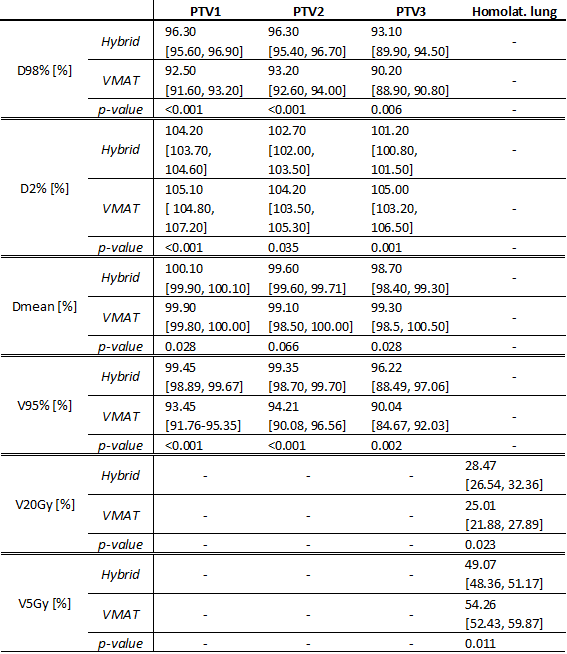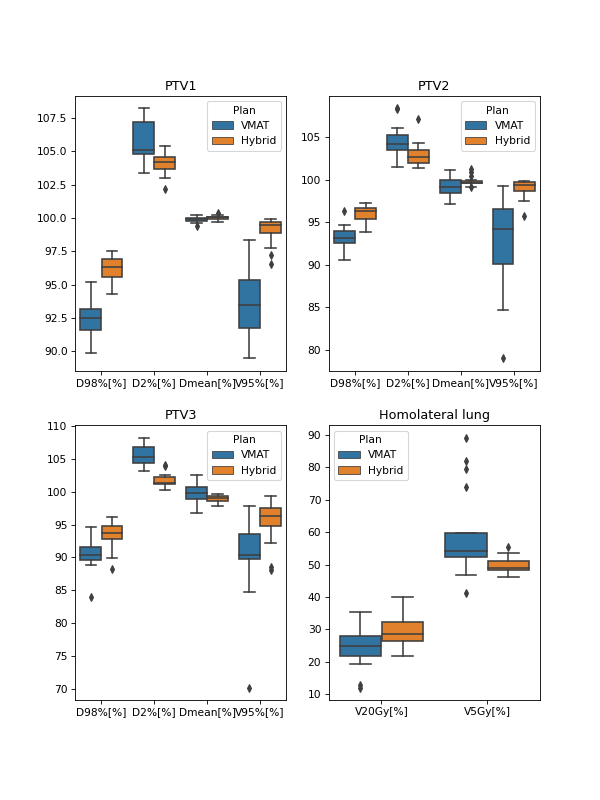VMAT vs Hybrid techniques in breast irradiation with internal mammary nodes
Daniel Lambisto Castro,
Spain
PO-2063
Abstract
VMAT vs Hybrid techniques in breast irradiation with internal mammary nodes
Authors: Daniel Lambisto Castro1, Ingrid Romera-Martínez1, Diego Jurado-Bruggeman1, Sebastià Agramunt-Chaler1, Albert Onsès-Segarra1, Eduard Massana-Melchor1, Meritxell Vidal Borràs2, Jordi Vayreda Ribera2, Arantxa Eraso-Urien2,3, Carles Muñoz-Montplet1,3
1Institut Català d'Oncologia, Medical Physics and Radiological Protection, Girona, Spain; 2Institut Català d'Oncologia, Radiation Oncology Department , Girona, Spain; 3University of Girona, Department of Medical Sciences , Girona, Spain
Show Affiliations
Hide Affiliations
Purpose or Objective
Irradiation of breast when internal mammary nodes are involved is dosimetrically challenging. The goal of this study is to compare the dosimetric outcomes of the irradiation of the breast using VMAT vs Hybrid techniques (combining static fields and modulated arcs)
Material and Methods
Seventeen patients that underwent breast irradiation in our facility were studied. The irradiation at 2.67Gy per fraction during 15 days included: breast (PTV1), supraclavicular lymph nodes (PTV2), and internal mammary nodes (PTV3). For each patient, two dosimetric plans were generated: one using two VMAT half-arcs and one combining static fields with two half-arcs. For each PTV we obtained D98%, D2%, Dmean, and V95%, along with V20Gy and V5Gy for the homolateral lung. To check if the differences observed between both irradiation techniques are statistically significant, Wilcoxon-cox tests (p<0.01) were performed for each DVH parameter.
Results
Using hybrid techniques results in a statistically significant increase of the minimum dose (D98%) for all PTV’s, and a decrease in maximum dose (D2%) for all PTV’s (statistically significant for PTV1 and PTV2). No significant changes are found in Dmean between hybrid or VMAT techniques, but we observe a statistically significant increase in V95% for all PTV’s when using hybrid techniques.
An increase in V20Gy and a decrease in V5Gy (both non-significant), are observed for the homolateral lung. No relevant data is shown for the contralateral lung because of the great statistical dispersion observed in our sample
See table below for details.

Table 1: Median, first and third quartiles (in brackets) are shown. All results are given as a percentage of the prescribed dose or a percentage of the organ volume
Figure1: Boxplot representation of the values shwon in table 1. Y-axis as a percentage of the of the prescribed dose or a percentage of the organ volume
Conclusion
Hybrid techniques, combining static and modulated arcs are a good dosimetric solution for the irradiation of patients with internal mammary nodes affected. However, VMAT techniques may be preferable compared to a hybrid technique in cases where V20Gy to the homolateral lung needs to be lowered